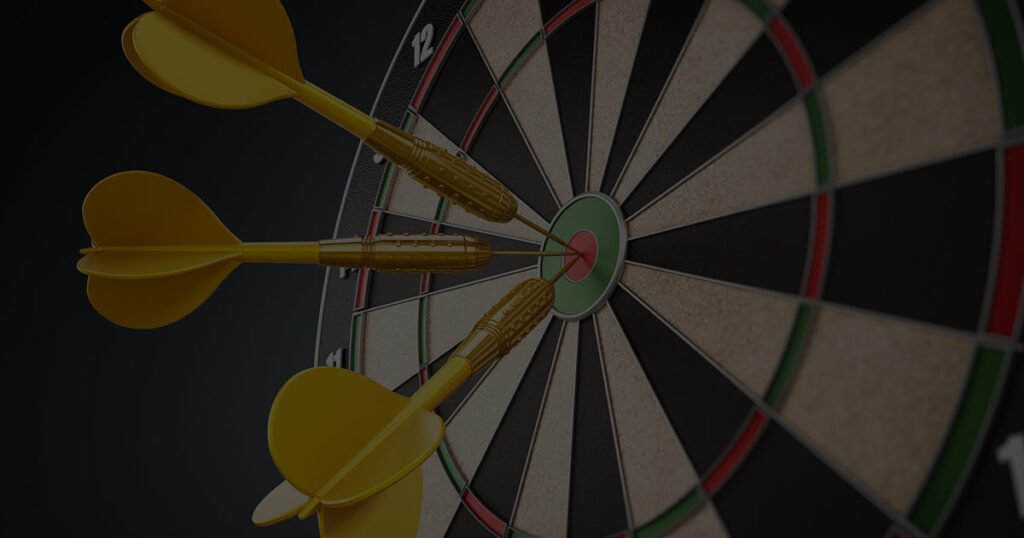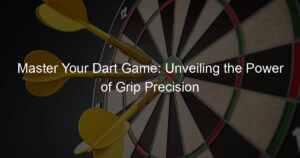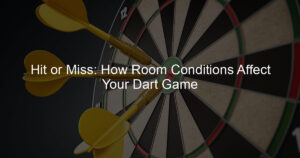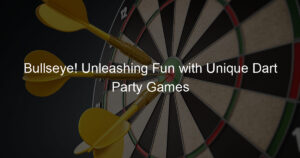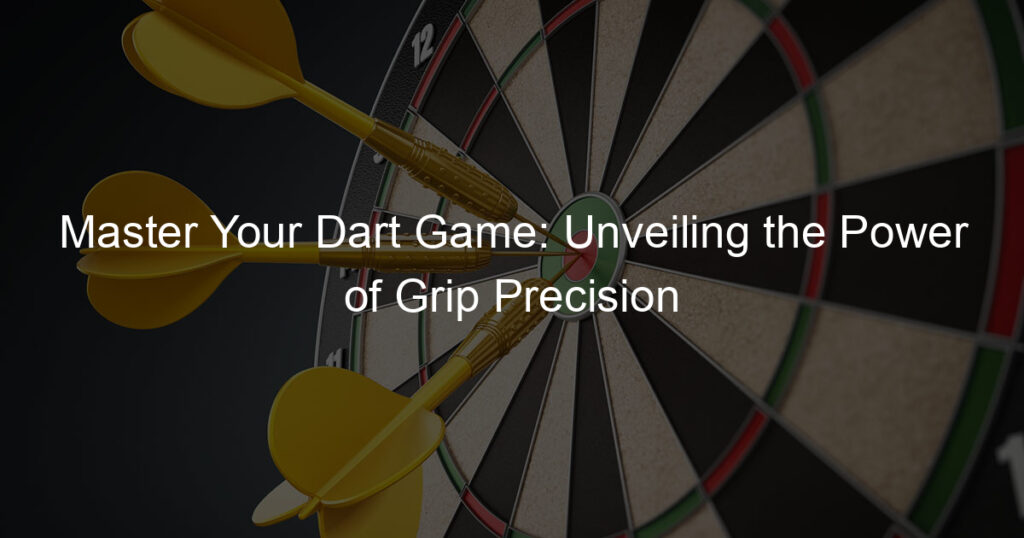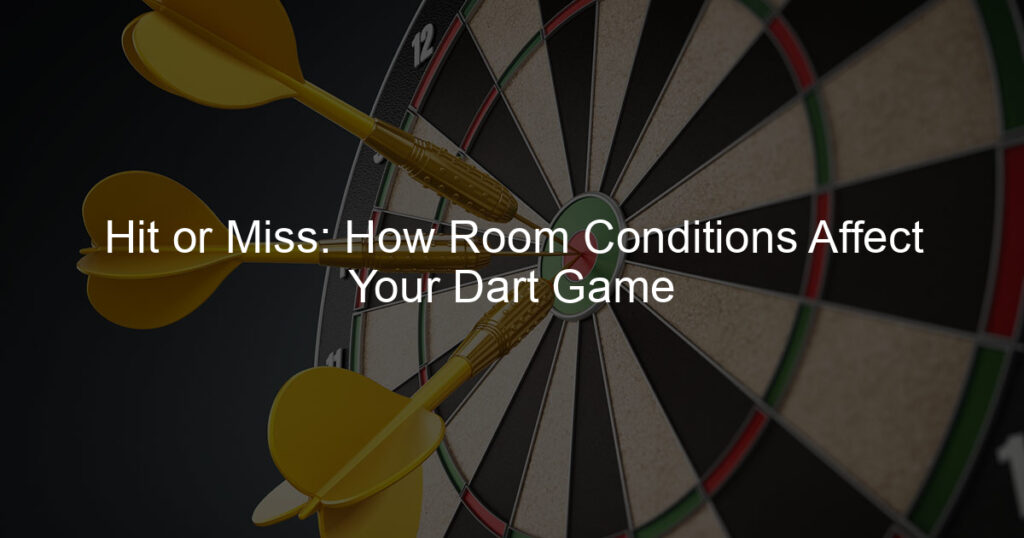Are you an avid dart player and have you ever wondered why the numbers on a dartboard are always in the same order? Well, it is more than just chance!
From its humble beginnings to changes throughout history, there’s a logic behind the order of those pesky little numbers. Read on as we explore why the much-loved pastime staples us with its unique numbering system – one that has stayed the same for centuries!
How did the dartboard get its numbers?
The current numbering system of a dartboard dates back to the late 19th century when the game was just starting to become popular.
The first dartboards were made from concentric circles of wire embedded with small nails, and the numbers were organized in a clockwise fashion. This format was dubbed “the 20s around,” referring to the 20 segments that make up the board.
The original pattern started at 1 in the very center of the board and ended with 20 at the outer edge. From there, numbers increased in both directions towards the bullseye—with even numbers on the left side and odd numbers on the right side. The 17th segment was omitted because it did not fit properly between 15 and 19; this is why we still have a gap between those two sections today!
Subsequent designs have kept this same basic layout, although some companies have taken liberties with it. For example, Bristle Dartboards now feature additional wedges between 1-5 and 17-20 as well as an extra double ring above the outer bullseye. But regardless of these variations, most modern boards will still follow this ’20s Around’ structure.
| Topic | Information |
|---|---|
| History | The game of darts originated in England in the late 19th century, and early dartboards were made from wooden wine casks. The numbering system used on these early dartboards was based on the numbering system used for clock faces. |
| Clock Face | The numbering system used on early dartboards was arranged in a circular pattern, similar to a clock face. The numbers on the dartboard were arranged in a way that allowed players to aim for specific areas of the board based on the time on the clock. |
| Modern Layout | The modern layout of the dartboard numbers was standardized in the early 20th century by the National Darts Association of Great Britain. The current arrangement of numbers is designed to balance the scoring potential of different sections of the board, with higher-scoring sections located next to lower-scoring sections. |
| Numbering Pattern | The numbering pattern on a standard dartboard is as follows:
|
How Do You Read Dart Numbers?
Depending on the type of dartboard you’re playing with, there are several different ways to read dart numbers.
On a standard round or circular board, the single bulls-eye is typically located in the center and numbered 25. Moving outward from this number, the order of numbers follows an ascending pattern beginning at 1 and continuing counterclockwise until it returns to 20.
On other dartboards like those used in cricket competitions, the same numbering system applies with one exception: The double bullseye (found near the outer edge) is typically numbered 50 instead of 25.
No matter what board you’re playing on, understanding how to read dartboard numbers will help you improve your accuracy and become a better darts player.
What do all the numbers on a dartboard add up to?
The numbers on a dartboard all add up to the same number: 171. This is because a traditional dartboard consists of 20 numbered sections, plus the bullseye, which adds up to 21 segments.
There are three rings around each numbered section, and each ring adds up to a specific point value.
The innermost ring has a point value of double the section number (2×1 = 2 points in the first segment), while the middle ring has a point value of triple the section number (3×1 = 3 points in the first segment) and the outermost ring has a point value of quadruple the section number (4×1 = 4 points).
Finally, the bullseye has an additional 25 or 50 points depending on whether you hit its inner or outer circle respectively. This means that if you were to hit every section and every ring within it, your score would be 171 for one round of darts.
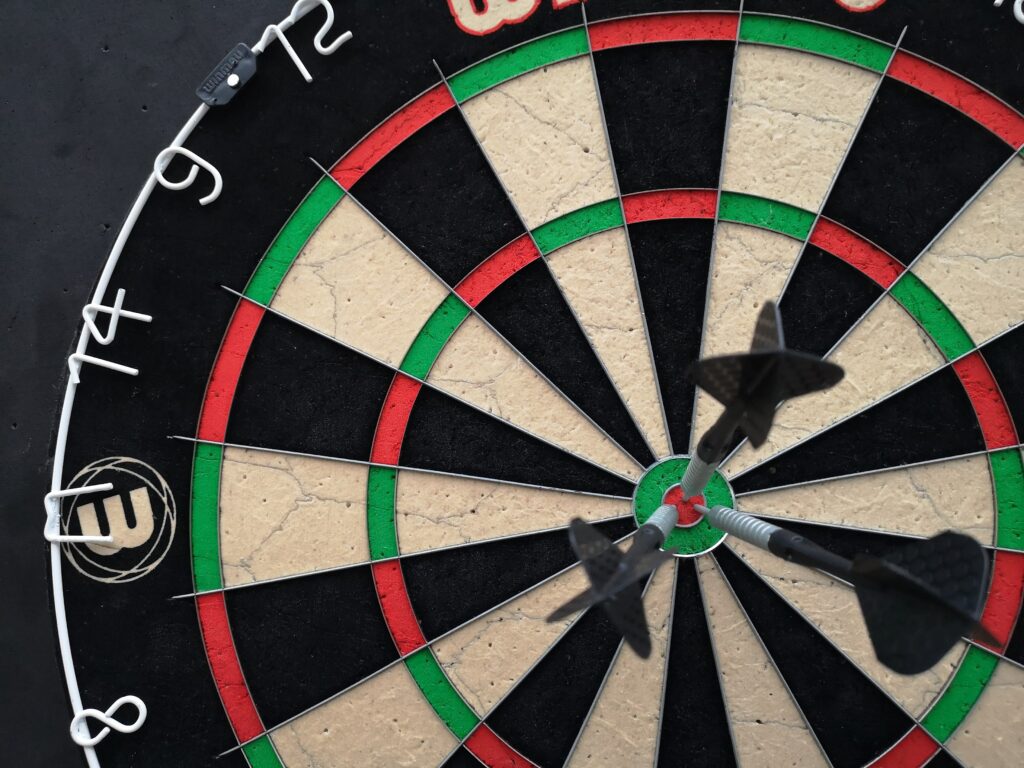
What is the 25 on a dartboard called?
The 25 on a dartboard is commonly referred to as the “outer bullseye”. This refers to the scoring zone that sits outside the main bullseye and is marked with a black or red circle.
When a player hits this part of the board, they receive double the points of their initial throw – either 25 or 50 depending on their dart game variant.
This section plays an important role in many popular dart games. It can often be used to conclude or win a game if players are unable to land in any other sections of the board. This makes it a powerful tool for experienced players and those looking for higher scores.
In some variants, hitting the outer bullseye will also add a shot for another player in play. This is especially beneficial when playing with more than one person, as it gives everyone a chance to improve their score and potentially take home the win.
Do you have to get the exact number in darts?
No, you do not have to get the exact number in darts. The basic premise of the game is to score as close to the target number as possible.
If a player scores more than what is needed for that round, their score will be reduced to match the target number. This is called “bustling,” and it prevents players from overscoring on one dart.
Players can also go over the target number if they manage to hit a double or triple ring while playing a double-in or triple-in game.
However, doing so will result in them getting 0 points in that round, meaning they missed out on potential points they could’ve had if they had gone under the target number instead.
What is the lowest number you Cannot get on a dartboard?
The lowest number you cannot get on a dartboard is zero. This is because the game of darts requires players to hit specific numbers to score points.
In addition, the lowest-scoring segment on a traditional dartboard is 1, which means that 0 is not an achievable point total. Other games may have different rules and scoring systems, so it’s important to check the rules of your game before playing.
It’s also worth noting that some variations of darts do allow for “bustling”, where a player can reduce their score back to zero if they exceed the target number.
This means that a player can hit any number on the board and still end up with zero points if they bustle correctly. However, this strategy should be used judiciously as it can give opponents an advantage if used too often or inconsistently.
It’s also important to keep in mind that hitting the bullseye can give you either 25 or 50 points depending on whether you hit the inner or outer ring respectively – this gives players another chance to reach higher scores while avoiding going over the target number.
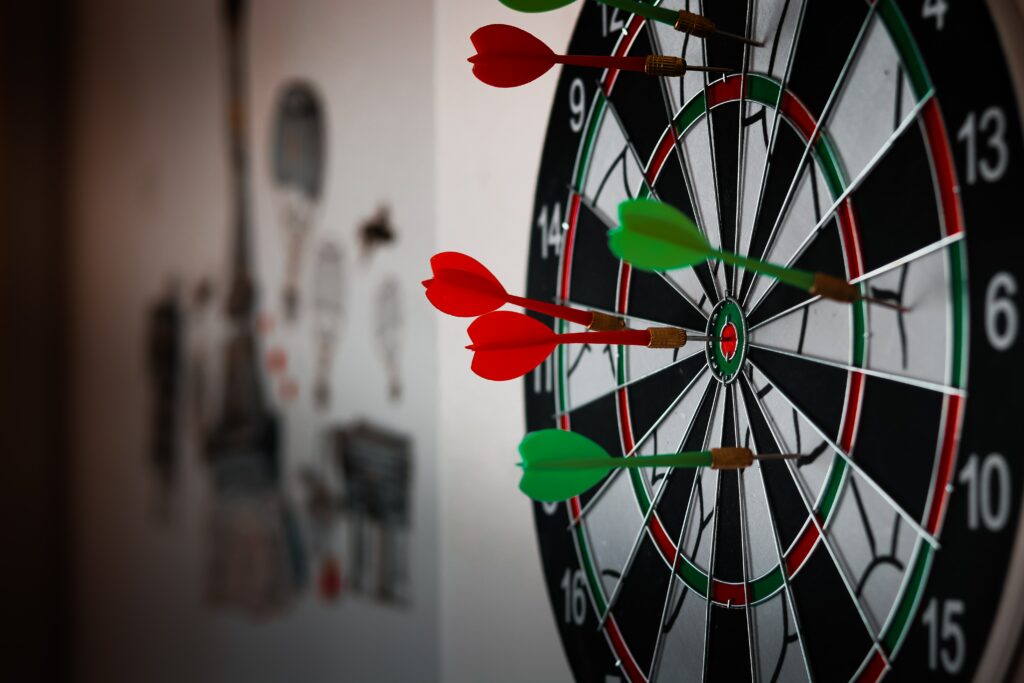
What is the highest score on a dart board?
The highest score that can be achieved on a dartboard is 180. This is done by achieving three triple 20s, or three consecutive darts landing in the center of the triple 20 segments (each worth 60 points).
This feat requires extraordinary skill and accuracy, as the outer bullseye has a point value of just 25 or 50 points. Many tournaments have an additional rule for determining a winner – scoring two consecutive 180s within the same game.
Given that each dartboard has 20 segments, with each segment divided into three rings with point values of double, triple, and quadruple the number value, a player can theoretically achieve a total score of 540 per game. However, this is virtually impossible to do unless you are an expert player.
In terms of professional competition results, Paul Lim holds the record for the highest Dartboard score at the 9-dart finish in 1990 which amounted to a total score of 254 points when two sets of triple 20s were hit consecutively followed by two consecutive bulls-eyes with his third dart in each turn.
What Is the Easiest Number To Hit on a Dartboard?
Although there is no easy answer to this question, some experts suggest that the most commonly hit number on a dartboard is 8. Due to its positioning near the center of the board and its proximity to both 20s and 19s, this number is often considered one of the easiest to hit.
Other commonly hit numbers include 5, 12, 15, 18, and 19. These numbers are typically located close to either edge of the board which makes them somewhat easier to target than those found in between.
No matter what your skill level or experience with darts may be, understanding how to read dartboard numbers will help you become a better player. With practice and determination, you can learn to accurately throw darts and score more points. Good luck!
What Is the Hardest Number To Hit on a Dartboard?
The hardest number to hit on a dartboard varies from player to player depending on their skill level and accuracy when throwing darts.
Generally speaking, the numbers located in between other numbers or along the center line of the board tend to be more difficult to hit accurately. This includes numbers like 10, 11, 14, 17, and 22.
Players may also find it more challenging to hit double bullseyes as these are typically found near the outer edge of the board which makes them harder to target with precision.
Similarly, triple bullseye (found near the inner edge) can also be brutal for some players due to their positioning close together on the board.
Practice and patience can help you develop more accuracy when playing darts regardless of the number you’re aiming for. With time and dedication, you can become a better dart player and score more points with each throw.
How Do You Memorize Dart Outs?
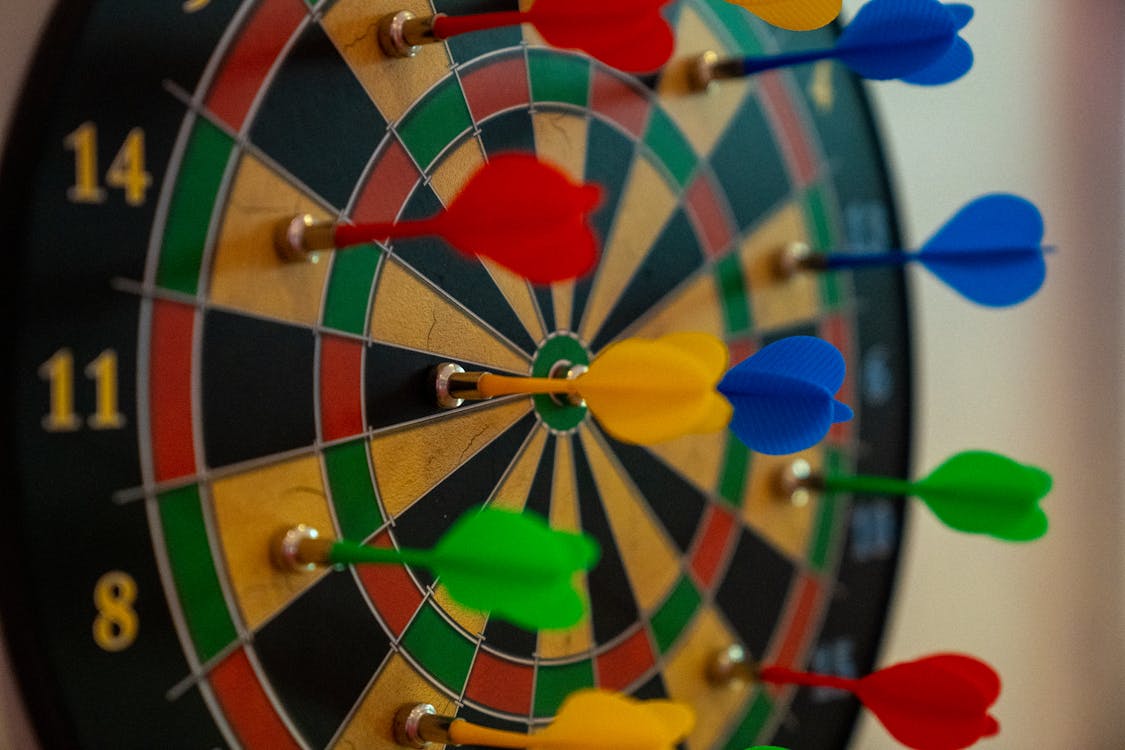
Memorizing dart outs is a great way to become more accurate and efficient when playing darts. To memorize dart outs, it’s best to start with the basics and learn the numbers that make up each out before moving on to more complex combinations.
For example, if you’re playing cricket and need two triples (60 points) to finish the game, you can start by remembering that three consecutive triples are always required for an out (9-18-27 or 10-20-30).
This knowledge can help you quickly identify which numbers must be thrown to score your desired total.
Once you’ve mastered the basics of dart outs, you can then move on to more challenging combinations such as double/triple outs, checkouts, and full house outs. With practice and dedication, you can eventually memorize all of the dart outs and become a better darts player.
Final Words
From the origins of this classic game to its modern-day variants, it’s clear that there is a method behind why dartboard numbers are in their current order.
The clockwise pattern from 1-20 with extra segments between 5 and 17 as well as an additional double-ring above the outer bullseye gives players more chances to score higher points while avoiding going over the target number.
Furthermore, understanding how each segment and ring contributes toward one’s total score can help players maximize their potential during any given round or tournament. Ultimately, mastering these features could be key for anyone looking to become a master of darts!

